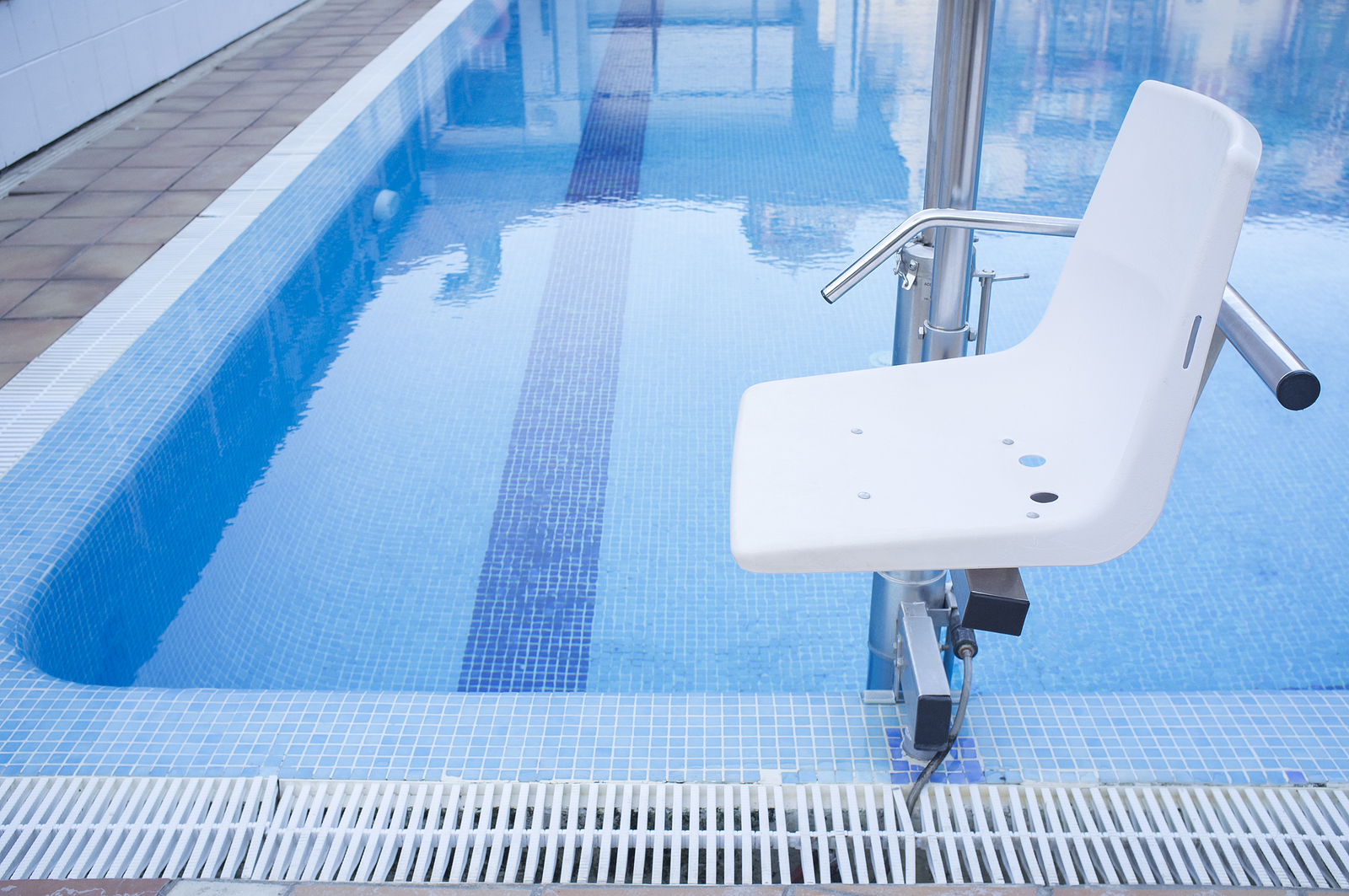| Relevant Downloads and Links | |
|---|---|
| ADA Requirements for Parks and Recreation | LINK |
The Americans with Disabilities Act (ADA), and the more recent Americans with Disabilities Act Amendment Act (ADAAA), provided disabled persons protections in a variety of ways. With the enactment of the law, many public facilities had new requirements to ensure proper accessibility was given to disabled citizens. Municipal swimming pools fall under that category, and cities that operate a pool need to comply with the law.
2010 ADA Standards for Accessible Design
The 2010 ADA Standards for Accessible Design was adopted by the Department of Justice in 2010 and gave pool owners, operators and designers the minimum requirements for accessibility. A basic tenet of accessibility, as stated by the law, is “at least two accessible means of entry shall be provided for swimming pools.” The list of suitable means of entry are: pool lifts, sloped entries (also referred to as a ramp), transfer walls, transfer systems and stairs. The regulations further state that a swimming pool must have either a compliant pool lift or compliant ramp as one of the two means of entry. Some professionals in the aquatics industry call this the primary means of entry.
Pool Lifts
Choosing the primary means of entry, pool lift or ramp, requires a designer or owner to consider a number of factors like available space, cost and usability. In general, a pool lift meets these challenges in the simplest manner because there are many pool lift models available on the market. This is especially true in retrofit situations. Owners and operators must ensure the unit can be operated unassisted from both the deck and water. This requirement means a swimmer must be able to move from the deck to the pool and vice versa without any assistance. In addition, the pool lift must meet requirements for water depth, seat location with respect to the pool’s edge, maneuvering space opposite the seat and water, seat height with respect to the pool deck, seat width, submerged depth of seat, and lifting capacity.
Pool Ramps
Like a pool lift, the choice to use a ramp requires specific considerations. The main requirement is the steepness of the entry. The slope shall not be steeper than a ratio 1-foot of vertical change to 12-feet of horizontal distance (1:12). Also, the ramp must have a handrail along both sides of the ramp. The handrails along the ramp shall have a clear width between 33-inches and 38-inches. In addition, the handrails must reach to a minimum water depth of 24-inches and a maximum of 30-inches.
Within the requirements for means of entry, the Department of Justice offers a number of “advisory” comments. The first recommendation is that designers, owners and operators select two different means of entry (e.g. a pool lift plus stairs). The intent is to provide accessibility to a wider range of patrons. Another noteworthy suggestion is to provide the least possible length of ramp, and if possible, provide stairs. This recommendation is intended for “those individuals for whom distance presents a greater barrier than steps, e.g., people with heart disease or limited stamina.”
Exceptions and Specialty Pools
The “Swimming Pool, Wading Pools and Spas” section clarifies the specific dimensional and configuration requirements for each means of entry. The section also details exceptions and defines the requirements for specialty pools such as wading pools, spas, wave pools, leisure/lazy rivers, sand bottom pools and slide catch (slide plunge) pools.
Information provided by Kyle McCawley, P.E., an associate engineer with Larkin Aquatics.






